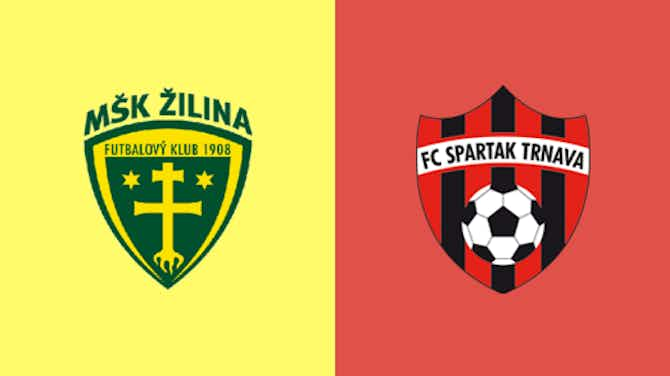Serie A Analysis
·30 June 2020
Serie A 19/20: Sassuolo vs Hellas Verona – tactical analysis

Serie A Analysis
·30 June 2020

An interesting encounter was expected on Sunday evening as 12th placed Sassuolo came face to face with Hellas Verona, one of the surprise packages of the Serie A season. Last time out Roberto De Zerbi’s side had come back from two goals down to draw 3-3 away against Inter at San Siro whilst 9th placed Verona were looking to recover following a 2-0 defeat to Napoli. That defeat had put a dent in their hopes to secure a place in next season’s Europa League, but the fact they were in a position to challenge at all is a testament to the excellent work done by their coach Ivan Juric.
This tactical analysis looks into the tactics used by Sassuolo and Verona during their entertaining 3-3 draw.

The hosts lined up in their 4-2-3-1 formation but made seven changes from the last game. Three of the back four were replaced with Giangiacomo Magnani, Federico Peluso and Georgios Kyriakopolous being introduced, while Manuel Locatelli (ex AC Milan) and Mehdi Bourabia returned to central midfield. A trident of captain Domenico Berardi, Gregoire Defrel and Lukas Haraslin supported lone striker Francesco Caputo. Interestingly, following all these changes, it would be the substitutes Jeremie Boga and Rogerio who would make significant contributions for the home side.
Juric lined Verona up in somewhat of a lopsided 3-4-1-2 and made three changes from the defeat to Napoli. German Koray Gunter started in central defence to join Amir Rrahmani and Marash Kumbulla. Claud Adjapong replaced the suspended Davide Faoroni on the right to join central midfielders Sofyan Amrabat and Miguel Veloso, and Darko Lazovic took up the spot at left-wing back. Polish forward Mariusz Stepinksi started ahead of Valerio Verre upfront and was supported by Mattia Zaccagni from the left and Matteo Pessina to the right.
As has been said on this site before, it’s no secret that a big part of Verona’s attacking tactics is to channel the majority of them down their left-hand side, using Zaccagni to receive the ball before releasing Lazovic on the overlap. This game was no different. A massive 77 per cent of their attacks were down their left and focused on exploiting Sassuolo’s right back Mert Mulder, with Verona’s two most left positioned players looking to create 2v1 opportunities against him. It was Verona’s only real cohesive way of attacking, aside from attempting to win second balls from long kicks up to Stepinski, but it was incredibly effective. It led to their first two goals and provided numerous crossing opportunities into the box throughout the first 60 minutes.
Verona’s preference for a left-sided attack was clear to see at the beginning of the match. Below we can see how Amrabat, who shows good pressing resistance, keeps hold of the ball so he can turn and play towards the left. The double team of Lazovic and Zaccagni are waiting by the touchline, outnumbering and isolating Muldur already.

As soon as the Morrocan is able to play forward, Zaccagni comes alive, dropping deeper towards the ball to receive and turn. The right-back is stuck. He can’t follow Zaccagni to close the ball down because that will free up Lazovic. Zaccagni is able to receive unmarked and plays a through ball inside the full-back. Nothing came of this particular situation but it was an early warning to Sassuolo and the scenario would happen time and time again with game-changing consequences.

Verona’s second goal is where the ploy got its biggest success. The overload enabled Lazovic the space to cross deliciously with the outside of his right foot allowing Stepinski to chest home at the far post. Looking at the screenshot below, we can see that whilst Mulder is overloaded, Magnani, the centre back, is reluctant to leave the middle as Verona have a 2v2 in the last line. This happened in the second half and you’d have thought by then Sassuolo would have become wise to it or at least been able to defend it better. The one thing that would have helped nullify it would have been more protection from Sassolo’s right midfielder, Berardi. But that didn’t happen. It’s a clear weakness in Sassoulo’s game without the ball and played into the hands of Verona’s go-to tactic. In fact, the overload only stopped happening once Verona went two goals clear and retreated into a low block, as we’ll see later in this analysis.

As much as Verona had an obvious way of attacking Sassuolo’s right back area, the Neroverdi had just as much as a focus with their plan to draw Verona towards them and play in the space left behind. In particular, this happened during Sassuolo’s build-up and especially when playing out from their defensive third. Coach De Zerbi first attracted praise for a playing style heavily influenced by positional play when he was coaching Foggia in Serie B and he has continued following that philosophy during his time in Italy’s top tier.
Consigli, Sassuolo’s goalkeeper, is heavily involved in the first phase of Sassoulo’s build-up play and often came of out the box to make a line of three with the centre backs outnumbering Verona’s two pressing forwards. Whilst it does seem like a risky tactic it allows the team in possession to have even more players in advanced areas to attack the last line. Additionally, it does have a clear advantage over dropping a midfielder into the defence to create a back three or having one of the fullbacks coming narrow. It’s something we are seeing more and whilst a number of smaller teams have adopted it, Ederson at Manchester City has highlighted it to a wider audience this season. Further up, both central midfielders dropped deep towards the ball to take their markers with them as Juric instructed his men to press in a 2-2 structure. Stepinski and Pessina looked to close down Magnani and Peluso whilst central midfielders Amrabat and Miguel Veloso looked after Locatelli and Bourabia. Below we can see what it looked like.

After a scenario like the above, the goalkeeper could play to one of the fullbacks, who naturally have more space against a system that becomes a back five out of possession. However, the more dangerous passes are to the forwards who could now receive in the massive gap created in Verona’s midfield.
Below we can see how Sassuolo’s forwards would use the space to combine and play to free players, either near them or waiting on the wing. Just moments after having the ball in their own third, through clever positioning and attracting pressure has enabled Sassuolo to have a player on the ball unmarked in the middle of the pitch with no pressure from the opposition to win it back.

Another element of Sassuolo’s game, and an important principle of positional play, is the use of third man combination whereby typically a long pass forward is followed by a lay-off backwards to an onrushing teammate who can play facing the opposition’s goal. It can be used in all areas of the pitch but is helpful for playing around pressure in the build-up phase, as Sassuolo showed here using Locatelli to change the point of attack by bouncing the ball to the Magnani, the third man.

Once Juric’s side had taken a two-goal lead, Verona retreated into a low block for the rest of the match, sitting just in front of their box and waiting to spoil Sassuolo’s attempts to play through them. The fullbacks Adjapong, and Lazovic who had been so decisive going forward, stayed in position to help the defence whilst Pessina moved to defend towards the right of midfield and Zuccagni dropped deeper on the left.

At half time Chelsea youth product Jeremie Boga and Brazilian left-back Rogerio had come on and eventually started to have a say on proceedings. Boga initially scored a well-taken equaliser and would go on to get another but it was his general play which helped Sassuolo open up the deep defence and cause problems. Rogerio would be a constant threat with overlapping runs but his biggest contribution would be when he dribbled inside to score from long range with almost the last kick of the game.
In a similar way to how Verona’s left side had had such an effect on the game earlier on, now Sassuolo’s left-hand side started to have their say. Many of Sassuolo’s attacks would now begin on that side, with Boga receiving the ball and dribbling infield to attract pressure and draw defenders out of possession. When this happened it would open up space on the opposite side of Verona’s defence.
Here we can see Rogerio has overlapped to distract the right back and Boga has made his way into the halfspace, attracted the whole defensive line and created space for a free man, which is the right-back Mulder on the other side.

This happened numerous times and in the images below we can notice when Boga has dribbled inside and given the ball to Locatelli and Berardi’s movement towards the ball drags two defenders with him. Locatelli is then able to switch the play over to the right where Muldur is free again to cross.

Before the equaliser came, De Zerbi took striker Defrel off and replaced him with Traore, a midfielder. While it may seem counterintuitive to take off a forward when you need a goal, it actually helped Sassuolo create more chances to score in two ways. Firstly, it meant Verona had another player to close down just in front of their defence, so brought about gaps in their back five as one of them had to step out to close him down. And secondly, because there was more space in the box it meant Caputo could use clever movement, to laterally arrive in space to receive passes and cut back for teammates to run into the position he’d vacated in front of goal.

Much of Sassuolo’s game is brilliant to watch. The way they build-up using the goalkeeper and keeping positional superiority high up the pitch to exploit space is why De Zerbi is so highly thought of. But he will not be happy with this result despite coming back from two goals down. They had enough chances to win the game and will be looking back on their failure to nullify Verona’s left-sided overloads during the first hour with regret. For Verona, their European qualification hopes are still alive and they can look forward to an exciting end to the season.






























































